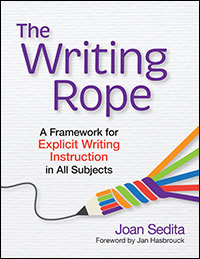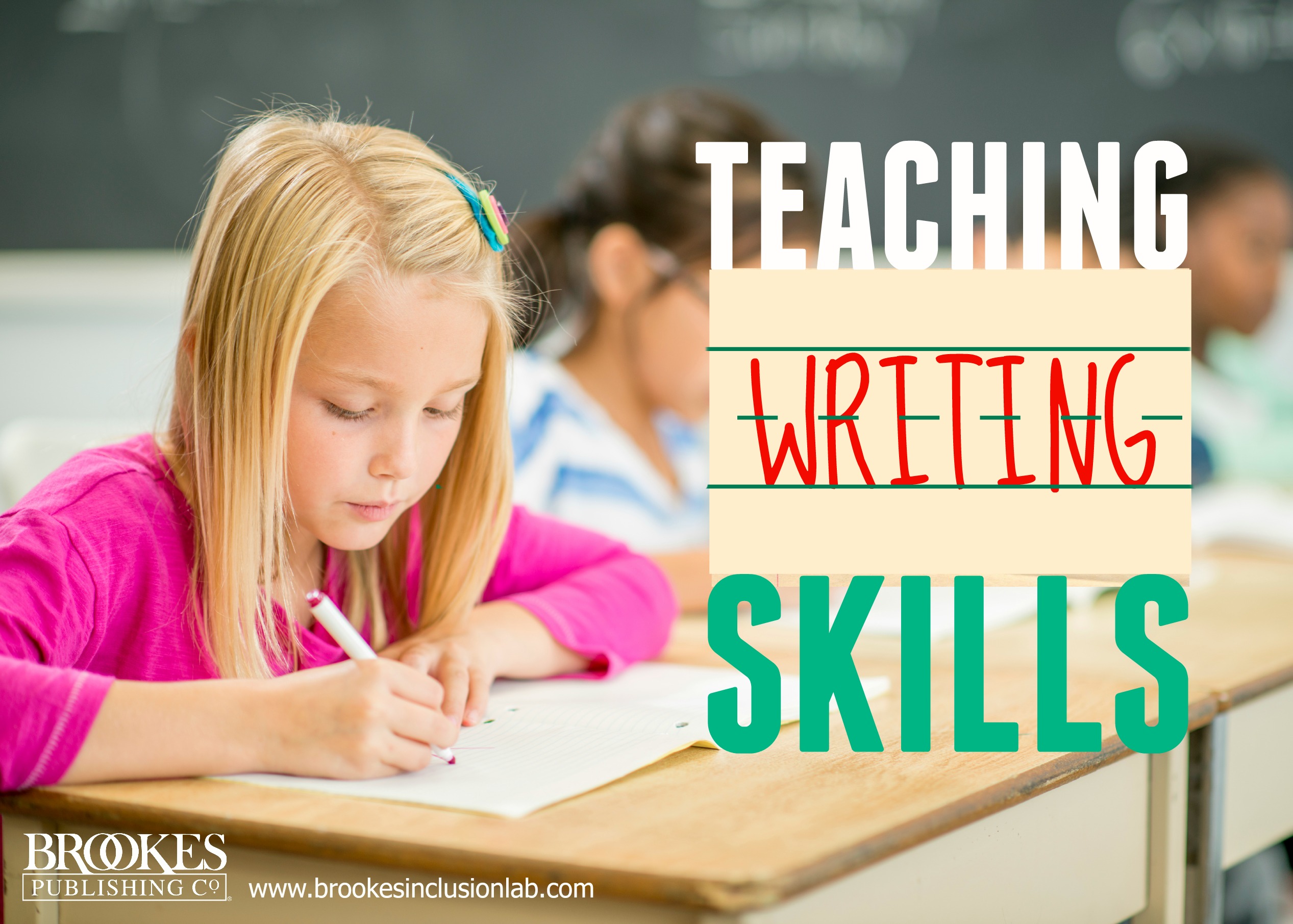7 Teaching Principles for Effective Writing Instruction
February 9, 2023
In her bestselling guidebook The Writing Rope, Brookes author Joan Sedita identifies seven teaching principles that should be incorporated when you assign writing tasks and teach writing skills. Teachers, keep the guidelines in today’s post handy as you plan and revise your instruction—and prepare students for lifelong success with written expression!

Gradual release of responsibility
The Gradual Release of Responsibility Model (Pearson & Gallagher) is an effective approach for teaching writing. It is sometimes referred to as an I do it, we do it, you do it model of instruction. During the I do it stage, you provide explicit instruction of a writing skill, with modeling through think-aloud. During the We do it stage, students practice the skill individually, in small groups, or as a whole group (e.g., the class editing a paragraph together). Guide this practice and include corrective feedback when necessary. Students eventually reach the You do it stage when they are able to apply the skill independently.

Explicit instruction of writing strategies
Explicit instruction involves using structured and sequenced steps to teach a specific skill. It includes explaining a skill and modeling how it is applied using think-aloud, and providing guided practice with feedback. Teaching students strategies for planning, revising, and editing their compositions has shown a dramatic effect on the quality of students’ writing. Strategy instruction may involve teaching more generic processes, such as brainstorming or collaboration for peer revising, or it may involve strategies for accomplishing a specific type of writing task, such as writing an opinion or argument piece (Graham & Perin, 2007).

Differentiated instruction to meet individual needs
Differentiated instruction calls for designing instruction to suit individual student needs rather than using a standardized approach to instruction that assumes all students learn to write the same way. For students who struggle with different aspects of the writing process, you can provide customized scaffolds as needed to support their learning. (For more guidance on differentiation, read this post: Differentiated Instruction: 7 Key Principles and How-Tos.)
Scaffolding to support learning of new skills
Scaffolding is assistance offered by a teacher or a peer to support learning a writing skill that a student is initially unable to grasp independently, and then removal of the assistance once the skill is learned. Instructional scaffolds for writing may include the following:
- Breaking a writing task into smaller, more manageable parts or steps
- Providing word lists, prompts and questions, or writing tips
- Providing sentence starters, writing templates, graphic organizers, and checklists
- Providing opportunities for students to work collaboratively






Write a Comment
Your email address will not be published. Required fields are marked *
Post a Comment